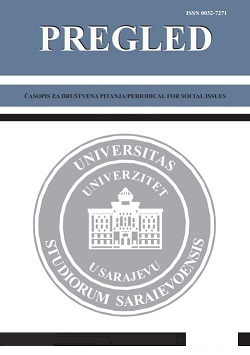Društveno-istorijski razvoj lokalne samouprave u gradu Sarajevu
Social-Historical Development of Local Self-Government in the City of Sarajevo
Author(s): Mirko PejanovićSubject(s): Governance, Local History / Microhistory, Political history, Social history, Recent History (1900 till today), Social development, Rural and urban sociology, 15th Century, 16th Century, 17th Century, 18th Century, 19th Century
Published by: Univerzitet u Sarajevu
Keywords: Bosnia and Herzegovina; city of Sarajevo; Canton Sarajevo; Constitution of Sarajevo Canton; local self-government; Dayton Peace Agreement; European Charter on Local Self-Government; urban development;
Summary/Abstract: This paper elaborates the genesis of the socio-historical development of local selfgovernment in the city of Sarajevo from the 15th to the 20th centuries. Sarajevo became the urban center during the Ottoman administration in Bosnia and Herzegovina, founded by Isa-bey Ishaković in 1462. The second period of Sarajevo's urban development dates from 1521 to 1541, when the role of the administrator of the Bosnian Sanjak was carried out by Gazi Husrev-bey. During the 16th, 17th and 18th centuries, Sarajevo turned into a large city settlement under Ottoman rule. During the Ottoman administration, the City of Sarajevo was the center of trade and merchandise trade between the East and West. The turning point in the urban development of the city of Sarajevo entered with the Austro-Hungarian administration. From 1878-1914, Sarajevo got its own management and became a modern urban center like the towns in Central Europe. After the Second World War, the city of Sarajevo achieves a new rise in its development. The rise in the development of the City of Sarajevo will be especially confirmed during the preparation and maintenance of the 14th Winter Olympics. In the late 1970s and early 1980s, the city of Sarajevo expanded its territorial coverage to ten municipalities with the inclusion of the city of Sarajevo: Trnovo, Hadžići, Pale and Ilijaš. The 1992-1995 siege of Sarajevo led to the destruction of the economy and social activities. After the Dayton Peace Agreement in 1995, Sarajevo reintegrated its urban units that were under the siege of the Republika Srpska Army during the war in early 1996. In 1996, the Sarajevo Canton was established on the territory of the municipalities that were part of the City of Sarajevo. The Sarajevo Canton authorities have appropriated the property and jurisdiction from the City of Sarajevo. Since then, the City of Sarajevo has not completely solved the constitutional-legal and political status from the standpoint of autonomous competences and territorial organization on the whole of its urban space. The paper presents the prerequisites for changing the constitutional and legal status of the city of Sarajevo, which, as a local self-government unit, would have full competence on the basis of the European Charter of Local Self-Government.
Journal: PREGLED - časopis za društvena pitanja
- Issue Year: LIX/2018
- Issue No: 3
- Page Range: 25-46
- Page Count: 22
- Language: Bosnian

